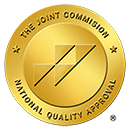How to Tell if Your Child Has Asthma or Allergies – When to Visit the Emergency Room
How to Tell if Your Child Has Asthma or Allergies – When to Visit the Emergency Room
It is the dilemma most parents face – is my child suffering from asthma or allergies? While children of all ages suffer from stuffy noses, cough and congestion, kids who have asthma or allergies are at greater risk of complications. Understanding the difference between the two conditions is critical.
Without proper understanding, it is easy to mistake asthma for allergies and this misunderstanding could be devastating to not only the child but the whole family.
Diagnosing Asthma in Children
Asthma is a chronic respiratory condition that causes narrowing and inflammation of the bronchial tubes.
Children and adults who are diagnosed with asthma may deal with the condition their entire lives, with asthma attacks occurring intermittently when inflammation and mucous production gets especially bad.
Common asthma symptoms every parent should know include:
- Pain or tightness in the chest
- Shortness of breath
- Wheezing
- Coughing
- Difficulty sleeping caused by any of the above conditions
Asthma can be inherited and children with the disease often begin having symptoms before they turn five years old. Since young children are unable to explain their symptoms well and their bronchial tubes are small, doctors may have difficulty diagnosing asthma in preschoolers and toddlers.
Head or chest colds and other bronchial illnesses may appear quite similar. Families should let medical providers know about any history of respiratory illnesses to make diagnosing issues easier.
Treating Asthma in Children
Asthma treatments usually include long-acting medicines, such as inhaled corticosteroids, leukotriene modifiers, beta agonists, theophylline and inhalers. However, your doctor may also recommend that your child carry rescue treatments, including faster-acting corticosteroids and bronchodilators.
Diagnosing Allergies in Children
According to the Asthma and Allergy Foundation of America, approximately 40 percent of children suffer from some type of allergy and this number appears to be on an upward trend. Anyone can technically be allergic to anything but common allergens for children include:
- Foods such as nuts, shellfish and milk
- Animals and insects such as dogs, cats and bees
- Medicines and their ingredients such as antibiotics and sulfites
- Environmental factors such as grass, pollen, dust and ragweed
Allergy Symptoms in Children
Allergy symptoms can vary widely and it could affect the kid differently depending on the child and the type of allergy.
Food allergies, for example, can result in anything from a mild rash or eczema to full anaphylactic shock. An upset stomach after eating certain foods — usually identified by keeping a food journal for a few weeks or months — is also common with food allergies.
Kids with seasonal and environmental allergies may be more likely to have traditional hay fever-like symptoms, such as a runny nose, frequent sneezing and itchy, watery eyes.
Some other common signs of an allergy are chronic nasal or chest congestion, difficulty breathing, fatigue and frequent ear infections.
Allergy treatments depend on the type of allergy, but the best treatment is to avoid or eliminate the trigger if possible. If not, such as in the case of environmental allergens, antihistamines are a common treatment.
See also: 4 Possible Causes of Hives That Will Surprise You.
Common Allergy Symptoms to Watch For
Since children with allergies can experience respiratory symptoms — including trouble breathing — and asthma can be triggered by allergies, it can be hard for parents to know if the problems are caused by a simple uptick in the pollen count or something more serious.
If your child is experiencing itchy, watery eyes, the respiratory stress isn’t severe and you know they’ve been around a possible allergen, it’s probably just allergies.
However, if your child is experiencing any of the following symptoms, asthma is more likely the culprit:
- Difficulty breathing
- Feeling short of breath
- A whistling noise on exhale
When to Take Your Child to the Emergency Room for Treatment for Asthma or Allergies
When your child experiences minor issues over time that you think are related to asthma or allergies, talk to your pediatrician at his or her next appointment — or schedule an appointment to discuss the issues with a board-certified emergency room physician.
Both conditions may be treated and managed, reducing uncomfortable symptoms and allowing your child to live a normal life.
Both allergies and asthma may be associated with serious flare-ups. If you think your child is having difficulty breathing or is experiencing pain or tightness in the chest, visit your closest emergency room for immediate assistance.
Board-certified emergency room doctors will assess your child’s condition and administer breathing treatments or other medications immediately. They’ll also provide follow-up care to ensure your child stabilizes after the incident and help you understand whether it was a serious allergic reaction or an asthma attack.
Whether the diagnosis is allergies or asthma, it’s important not to panic. Both of these conditions are usually treatable and your child will likely go on to live a long, healthy life with the proper protocols in place.




